Danny Merkx
Modelling word learning and recognition using visually grounded speech
Mar 14, 2022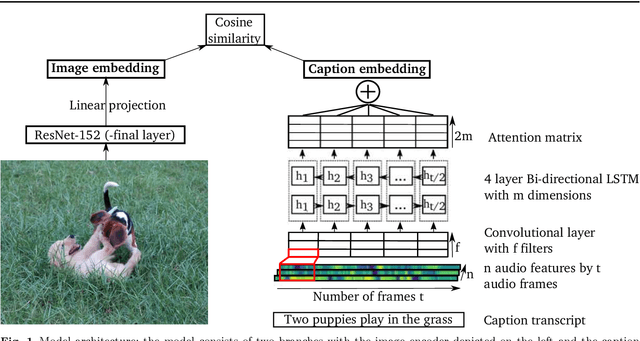
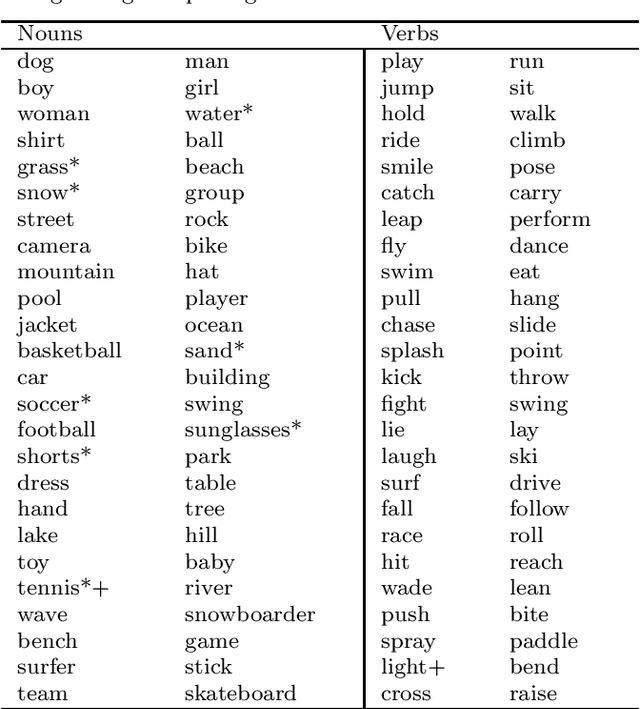
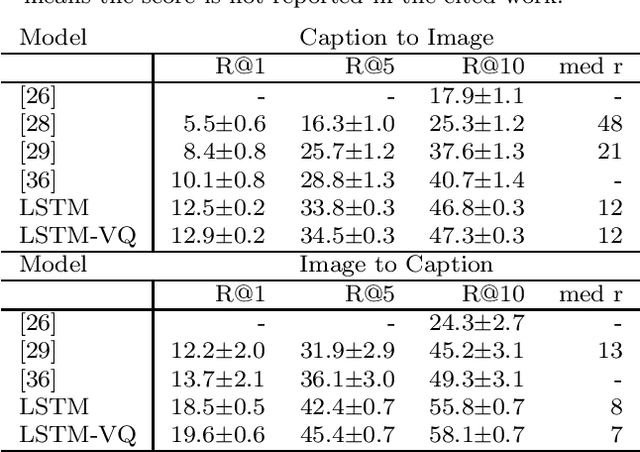
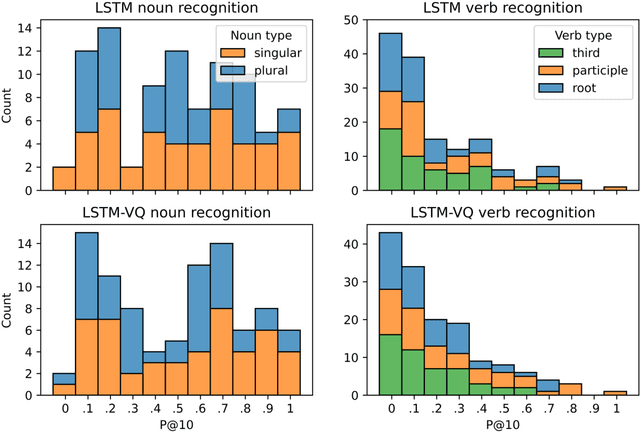
Abstract:Background: Computational models of speech recognition often assume that the set of target words is already given. This implies that these models do not learn to recognise speech from scratch without prior knowledge and explicit supervision. Visually grounded speech models learn to recognise speech without prior knowledge by exploiting statistical dependencies between spoken and visual input. While it has previously been shown that visually grounded speech models learn to recognise the presence of words in the input, we explicitly investigate such a model as a model of human speech recognition. Methods: We investigate the time-course of word recognition as simulated by the model using a gating paradigm to test whether its recognition is affected by well-known word-competition effects in human speech processing. We furthermore investigate whether vector quantisation, a technique for discrete representation learning, aids the model in the discovery and recognition of words. Results/Conclusion: Our experiments show that the model is able to recognise nouns in isolation and even learns to properly differentiate between plural and singular nouns. We also find that recognition is influenced by word competition from the word-initial cohort and neighbourhood density, mirroring word competition effects in human speech comprehension. Lastly, we find no evidence that vector quantisation is helpful in discovering and recognising words. Our gating experiments even show that the vector quantised model requires more of the input sequence for correct recognition.
Seeing the advantage: visually grounding word embeddings to better capture human semantic knowledge
Feb 21, 2022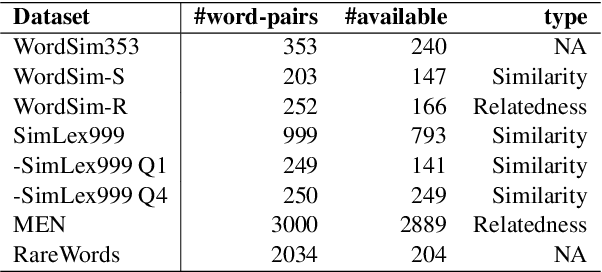
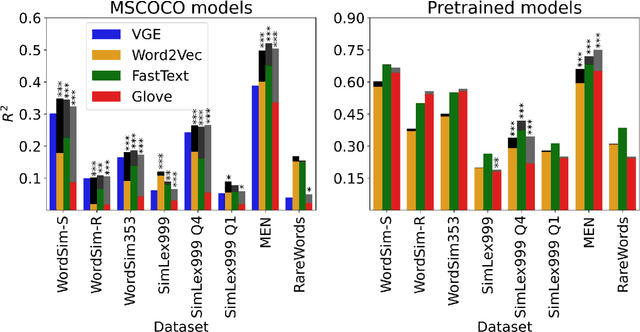
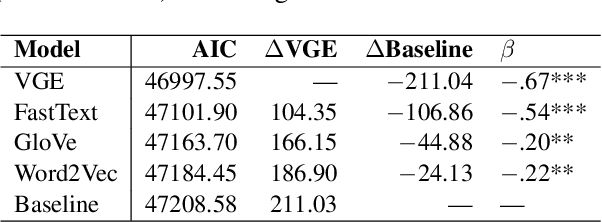

Abstract:Distributional semantic models capture word-level meaning that is useful in many natural language processing tasks and have even been shown to capture cognitive aspects of word meaning. The majority of these models are purely text based, even though the human sensory experience is much richer. In this paper we create visually grounded word embeddings by combining English text and images and compare them to popular text-based methods, to see if visual information allows our model to better capture cognitive aspects of word meaning. Our analysis shows that visually grounded embedding similarities are more predictive of the human reaction times in a large priming experiment than the purely text-based embeddings. The visually grounded embeddings also correlate well with human word similarity ratings. Importantly, in both experiments we show that the grounded embeddings account for a unique portion of explained variance, even when we include text-based embeddings trained on huge corpora. This shows that visual grounding allows our model to capture information that cannot be extracted using text as the only source of information.
Semantic sentence similarity: size does not always matter
Jun 16, 2021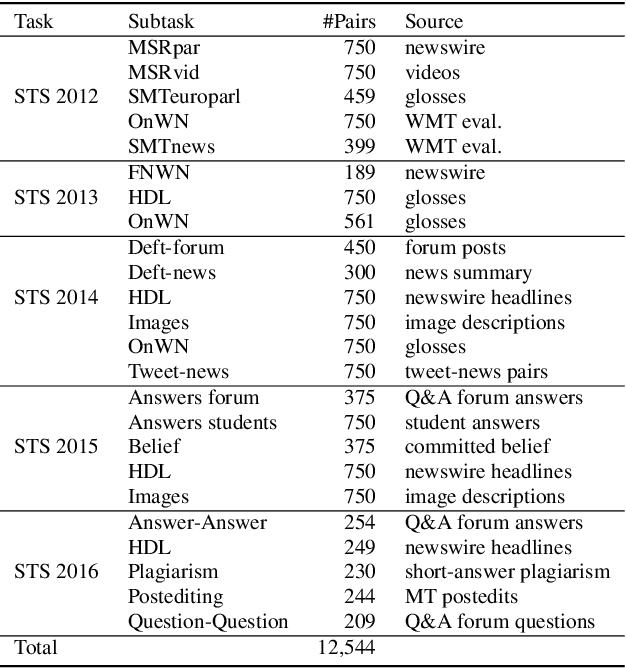


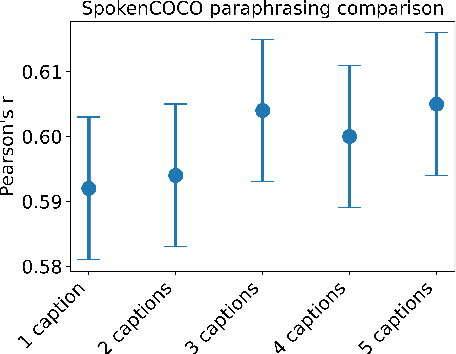
Abstract:This study addresses the question whether visually grounded speech recognition (VGS) models learn to capture sentence semantics without access to any prior linguistic knowledge. We produce synthetic and natural spoken versions of a well known semantic textual similarity database and show that our VGS model produces embeddings that correlate well with human semantic similarity judgements. Our results show that a model trained on a small image-caption database outperforms two models trained on much larger databases, indicating that database size is not all that matters. We also investigate the importance of having multiple captions per image and find that this is indeed helpful even if the total number of images is lower, suggesting that paraphrasing is a valuable learning signal. While the general trend in the field is to create ever larger datasets to train models on, our findings indicate other characteristics of the database can just as important important.
Learning to Recognise Words using Visually Grounded Speech
May 31, 2020



Abstract:We investigated word recognition in a Visually Grounded Speech model. The model has been trained on pairs of images and spoken captions to create visually grounded embeddings which can be used for speech to image retrieval and vice versa. We investigate whether such a model can be used to recognise words by embedding isolated words and using them to retrieve images of their visual referents. We investigate the time-course of word recognition using a gating paradigm and perform a statistical analysis to see whether well known word competition effects in human speech processing influence word recognition. Our experiments show that the model is able to recognise words, and the gating paradigm reveals that words can be recognised from partial input as well and that recognition is negatively influenced by word competition from the word initial cohort.
Comparing Transformers and RNNs on predicting human sentence processing data
May 19, 2020



Abstract:Recurrent neural networks (RNNs) have long been an architecture of interest for computational models of human sentence processing. The more recently introduced Transformer architecture has been shown to outperform recurrent neural networks on many natural language processing tasks but little is known about their ability to model human language processing. It has long been thought that human sentence reading involves something akin to recurrence and so RNNs may still have an advantage over the Transformer as a cognitive model. In this paper we train both Transformer and RNN based language models and compare their performance as a model of human sentence processing. We use the trained language models to compute surprisal values for the stimuli used in several reading experiments and use mixed linear modelling to measure how well the surprisal explains measures of human reading effort. Our analysis shows that the Transformers outperform the RNNs as cognitive models in explaining self-paced reading times and N400 strength but not gaze durations from an eye-tracking experiment.
Language learning using Speech to Image retrieval
Sep 09, 2019
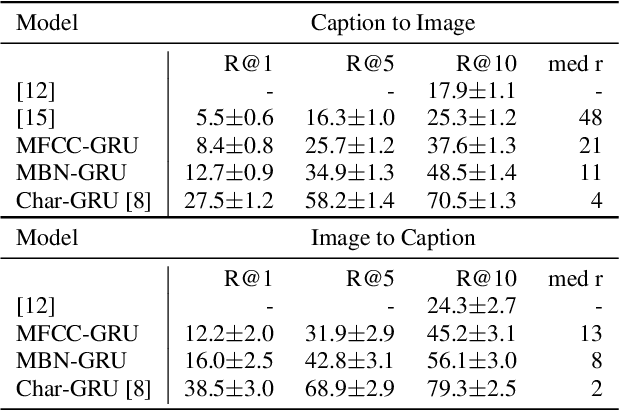


Abstract:Humans learn language by interaction with their environment and listening to other humans. It should also be possible for computational models to learn language directly from speech but so far most approaches require text. We improve on existing neural network approaches to create visually grounded embeddings for spoken utterances. Using a combination of a multi-layer GRU, importance sampling, cyclic learning rates, ensembling and vectorial self-attention our results show a remarkable increase in image-caption retrieval performance over previous work. Furthermore, we investigate which layers in the model learn to recognise words in the input. We find that deeper network layers are better at encoding word presence, although the final layer has slightly lower performance. This shows that our visually grounded sentence encoder learns to recognise words from the input even though it is not explicitly trained for word recognition.
Learning semantic sentence representations from visually grounded language without lexical knowledge
Mar 27, 2019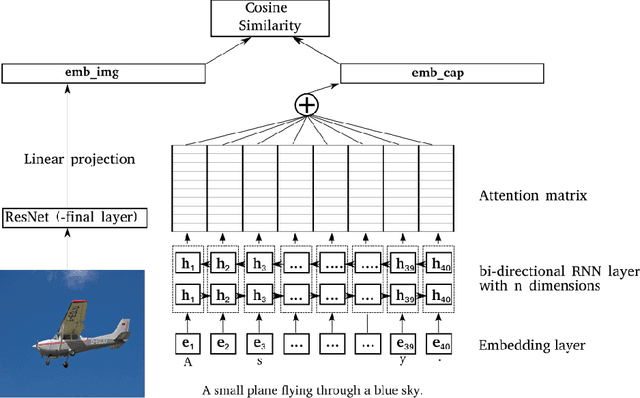
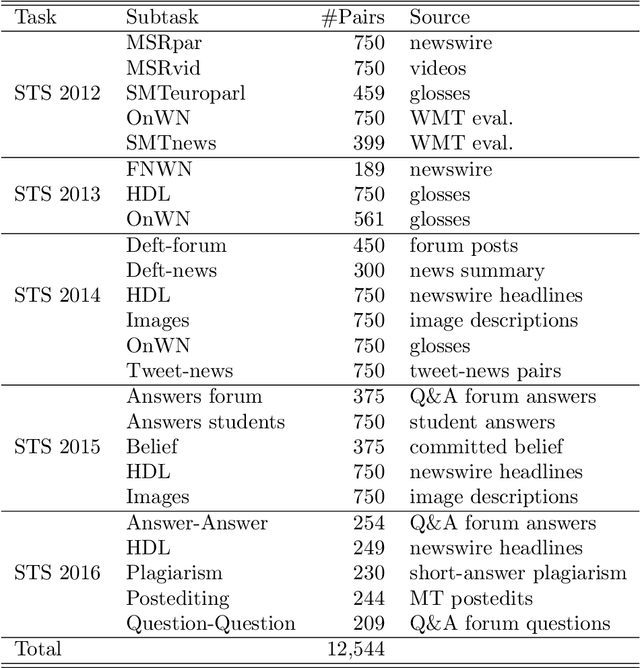
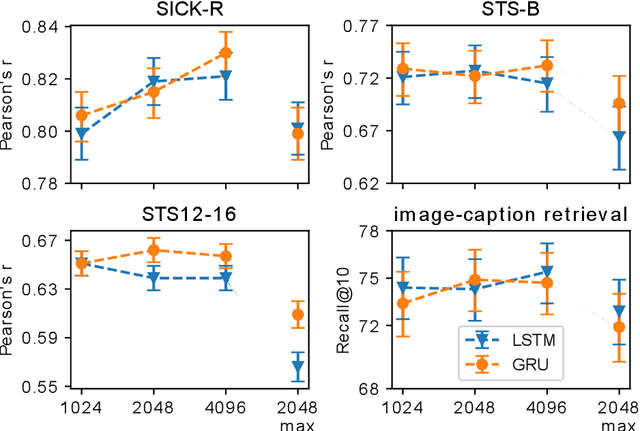

Abstract:Current approaches to learning semantic representations of sentences often use prior word-level knowledge. The current study aims to leverage visual information in order to capture sentence level semantics without the need for word embeddings. We use a multimodal sentence encoder trained on a corpus of images with matching text captions to produce visually grounded sentence embeddings. Deep Neural Networks are trained to map the two modalities to a common embedding space such that for an image the corresponding caption can be retrieved and vice versa. We show that our model achieves results comparable to the current state-of-the-art on two popular image-caption retrieval benchmark data sets: MSCOCO and Flickr8k. We evaluate the semantic content of the resulting sentence embeddings using the data from the Semantic Textual Similarity benchmark task and show that the multimodal embeddings correlate well with human semantic similarity judgements. The system achieves state-of-the-art results on several of these benchmarks, which shows that a system trained solely on multimodal data, without assuming any word representations, is able to capture sentence level semantics. Importantly, this result shows that we do not need prior knowledge of lexical level semantics in order to model sentence level semantics. These findings demonstrate the importance of visual information in semantics.
Linguistic unit discovery from multi-modal inputs in unwritten languages: Summary of the "Speaking Rosetta" JSALT 2017 Workshop
Feb 14, 2018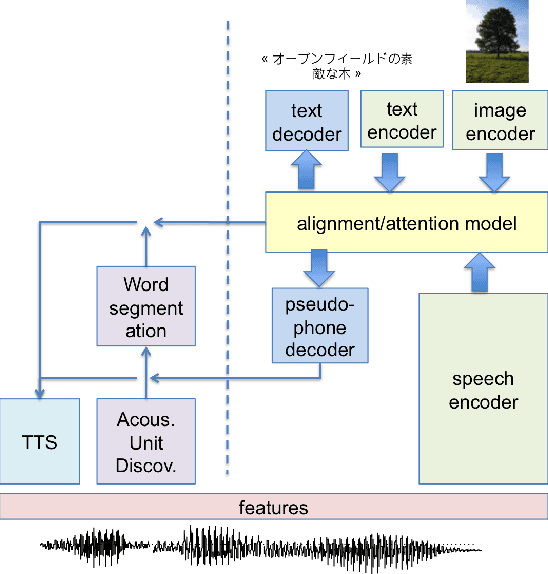


Abstract:We summarize the accomplishments of a multi-disciplinary workshop exploring the computational and scientific issues surrounding the discovery of linguistic units (subwords and words) in a language without orthography. We study the replacement of orthographic transcriptions by images and/or translated text in a well-resourced language to help unsupervised discovery from raw speech.
 Add to Chrome
Add to Chrome Add to Firefox
Add to Firefox Add to Edge
Add to Edge